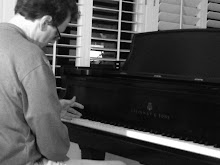O mio babbini caro
In the context of Smule, I was meeting with the director of digital media for the San Francisco Opera a week ago. We were talking about potentially collaborating with the SF Opera and Smule's Sing! Karaoke product. Wouldn't it be amazing if you could sing with the acoustics of the SF Opera hall, with the SF Opera orchestra? And wouldn't it be more amazing if you could actually sing with some of the top artists in the world? We shall see.
It was funny, though, because we were talking about what songs might make the most sense for the Sing! community, and I naturally thought of Mozart and Puccini. My colleague at the opera mentioned, "yeah, I suppose we should include some pop music". As opposed to the ring cycle?...
Anyway, I was reminded of how much I adore Puccini arias (guilty as charged), and so sat down and recorded O mio babbino caro this morning. I performed this alongside selections from Strauss and Schubert with a friend over the past couple years.
O mio babbino caro
It was funny, though, because we were talking about what songs might make the most sense for the Sing! community, and I naturally thought of Mozart and Puccini. My colleague at the opera mentioned, "yeah, I suppose we should include some pop music". As opposed to the ring cycle?...
Anyway, I was reminded of how much I adore Puccini arias (guilty as charged), and so sat down and recorded O mio babbino caro this morning. I performed this alongside selections from Strauss and Schubert with a friend over the past couple years.
O mio babbino caro
O mio babbino caro,
mi piace, è bello, bello. Vo'andare in Porta Rossa (it) a comperar l'anello! Sì, sì, ci voglio andare! e se l'amassi indarno, andrei sul Ponte Vecchio, ma per buttarmi in Arno! Mi struggo e mi tormento! O Dio, vorrei morir! Babbo, pietà, pietà! Babbo, pietà, pietà! |
Oh my dear papa,
I love him, he is handsome, handsome. I want to go to Porta Rossa To buy the ring! Yes, yes, I want to go there! And if my love were in vain, I would go to the Ponte Vecchio And throw myself in the Arno! I am anguished and tormented! Oh God, I'd like to die! Papa, have pity, have pity! Papa, have pity, have pity! |





